WINTER 2025


DR. JEFF STRINGER RETIRES
GRADUATE RESEARCH UNDERGRADUATE STUDENTS



DR. JEFF STRINGER RETIRES
GRADUATE RESEARCH UNDERGRADUATE STUDENTS
We are in the middle of our academic year, and the department has the largest group of underclass students it has had in quite some time. We had almost 50 in dendrology, so things are hopping around the T.P. Cooper building. Our first forestry club meeting had a full room! Overall, it’s a great bunch of students.
There are changes all over campus and in our building. If you have an opportunity, drop by T.P. Cooper, as we have added video monitors in the hallways, posters of summer camp classes grouped by decades, revised Robinson Forest displays, and more to come. Significant demolition and new construction have affected the College, such as Scovell Hall, Agr. North and other buildings, greenhouses, and the pedway across Cooper Drive are being demolished, most of which are for hospital expansion. Replacement agriculture buildings are going up across the road near the Good Barn. One day, the hospital will finally devour the T.P. Cooper building and the Dimock building to our rear, which we occupy half of, and we will get a new building with the rest of the College, or so they say.
Many know we are conducting a chair search for my replacement. The committee, which includes some of our faculty and staff, is hard at work. Stay tuned, and we hope to attract a candidate who can lead the department through an exciting time of change!

We are proud to announce the Wayne and Sara Clatterbuck Forest Biology Graduate Endowment. Dr. Wayne Clatterbuck, an alumnus of the B.S. in Forestry class of 1978, and his wife, Sara, have graciously established this endowment with the express purpose of enhancing our graduate program in perpetuity. The gift will provide funds for stipends, tuition, supplies, and travel support for students focusing on silviculture, forest ecology and physiology, and related fields. Gifts like these are significant, providing much-needed funding to improve opportunities for students in our Master of Science degree program and our newly established Ph.D. program.


As an undergrad and graduate student, I was exposed to the methods used in coal surface mining and researched reclaimed coal-mined lands in Kentucky, Texas, and Virginia. That work influenced my teaching style because I experienced large-scale environmental impacts with far-reaching consequences firsthand. As a result, we must not only train students to develop the appropriate field skills and use the best management practices available but also ensure they understand how their work fits global-scale issues.
The mountains of Appalachia are woven into my origin story and are responsible for the values and beliefs I hold today. As a child, I was immersed in the magic and wonder of the eastern hardwood deciduous forest. The students who experience summer camp will find inspiration in learning about the enchantment of Robinson Forest, just like I did.
Thinking back to my undergraduate days at UK in the FNR Department, I recall my opportunities — traveling to conferences, volunteering for tree planting work, and making lifelong friendships. I also reflect on the moments of doubt and anxiety I had about my future; however, with the support of my professors and other department mentors, I learned from my mistakes and shortcomings and thrived as a student. As a lecturer, I strive to create that same environment and mindset for students so they can learn, grow, and succeed while working alongside amazing faculty, staff, and alums.

When 4-year-old Jeff Stringer reeled in his first catch, he likely had no idea that over six decades later, and after accomplishing a lifetime of learning, teaching, achievements, and accolades, he would be preparing for retirement from his position as Chair of the Department of Forestry and Natural Resources (FNR) at the University of Kentucky.
Stringer received his Bachelor of Science and Master of Science degrees in Forestry from UK. He earned a Ph.D. in Plant Physiology/Biochemistry/Molecular Biology Program from the University of Kentucky, so it is fitting that he should wrap up his professional career at a place he considered home.
Stringer started his professional career at UK in 1978 as a Research Assistant in the Department of Forestry. He would become a Research Specialist in Hardwood Silviculture, an Assistant Extension Professor, an Associate Extension Professor, professor, and ultimately the Chair of FNR in 2018.

On the national stage, Dr. Stringer has been heavily involved in various professional organizations and committees over the years, including serving as a National Woodland Owner Association member and the U.S. Forests Stewardship Council. He was appointed to three national committees, developing the first set of certification standards for U.S. forest management and later developing the national standards for family forests. Stringer held several leadership roles within the Society of American Foresters and contributed to policy development at the regional and state levels. Furthermore, his involvement extended to the National Walnut Council, where he contributed as a member of the silviculture committee and subsequently chaired the university research committee.
At the regional and state levels, Dr. Stringer was a board member and chair of the Kentucky Forestry Best Management Practices Board (BMP), where he developed state-mandated BMP standards. He was also a member of 10 regional and state boards and committees, including the Forest Landowners Association and the Biennial Southern Silvicultural Conference, where he currently serves on the Southern Region Extension Forestry executive committee.
Dr. Stringer is also an executive committee member and National Extension Chair of the National Association of University Forest Resource Programs, the co-founder and executive committee member of the White Oak Initiative, the founder and director of the Center for Forest and Wood Certification, and the director of the Kentucky Master Logger Program at the University of Kentucky.


Throughout his career, Dr. Stringer collaborated with scientists, conducted research, and was published in numerous articles, journals, and publications, including the Canadian Journal of Forest Research. This research used tritiated soil water to explore and define rooting patterns in common species found in oak-hickory forests. This led to the establishment of biological methodologies for determining leakage at nuclear waste disposal sites.1 Additionally, Physiologia Plantarum, an international journal for plant biology, included research that established the role of xylem sap in distributing respiratory CO₂ in large trees, including its role in providing CO₂ for fixation in leaves and its impact on CO₂ efflux, which impacts dark respiration measures.2 Furthermore, Forests, an international, peer-reviewed journal on forestry and forest ecology, published findings from multiple studies to define parameters associated with sediment delivery from ground-skidding timber harvesting operations and building science. This ultimately improved mandatory logging and best management practices.3
1Stringer, J., Kalisz, P., and Volpe, J. 1988. Deep tritiated water uptake and predawn xylem water potentials as indicators of vertical rooting extent in a Quercus Carya Forest. Canadian Journal of Forest Research 19(5): 627-631.
2Stringer, J. and Kimmerer, T. 1993. Refixation of xylem sap CO2 in Populus deltoides. Physiologia Plantarum 89: 243-251.
3Bowker, D., Stringer, J.W., Barton, C.D. 2020. Influence of timber harvesting operations and streamside management zone effectiveness on sediment delivery to headwater streams in Appalachia. Forests 11(6). Doe: 10.3390/F11060623

Throughout his career, Dr. Stringer received recognition and accolades for his work in forestry and environmental conservation with national awards, including the title of Fellow from the Society of American Foresters, the National Leadership Award from the Forest Stewardship Council, and the National Technical Writing Award from the Forest Resources Association. Additionally, he was named Extension Forester of the Year by the Forest Landowners Association and received the FNR Extension Team Award sponsored by the National Woodland Owners Association.
Regionally, Dr. Stringer’s contributions have been acknowledged with Awards for Individual Resource Development from the Southern Region Extension Forestry and the 2012 Henry Hardtner Award for Forest Sustainability from the Southern Group of State Foresters. He also received awards for Excellence in Forestry from the Kentucky/Tennessee Society of American Foresters and the Appalachian Regional Technical Writing Award from the Forest Resources Association.


At the university and state levels, Dr. Stringer received the High Impact Research/Extension Program Award from the College of Agriculture, the Laura Clay Award from the Kentucky Women in Agriculture Collaborative Project, and three Commonwealth Collaborative Awards from the University of Kentucky. Furthermore, he was honored with the University of Kentucky Work Life Supervisor of the Year and the Faculty Futures Award. His efforts were further recognized with the Governor’s Award for Environmental Excellence in Forestry and two Outstanding Specialist/Program Awards from the Association of Kentucky Extension Specialists.
Finally, as a student at the University of Kentucky, Dr. Stringer was recognized by Zi Sigma Pi as the Forester of the Year.

• First car was a 1964 Chevy Impala Super Sport with a 327 cubic inch engine and a manual transmission that required periodic clutch replacement.
• Married to his high school sweetheart, Jenny Greer. Despite Jenny’s moment of stupidity, she agreed to go out on a date with him.
• Favorite youth sports include ice hockey, baseball, AAU, and NCAA swimming. Stringer claims to be a backstroke specialist. His most recent successful endeavor is scuba diving.
• Been fishing since the age of 4. His claim to fame has been that he has caught three largemouth bass over 10 lbs, a 15 lb peacock bass in Rio Negro, Amazonia, Brazil, an 8.5 lb native rainbow in Kenai River, Alaska, a 41 lb redfish in Mosquito Lagoon, FL, and an 18 lb steelhead in St. Joe River, MI. But who’s counting?
• Men’s Ministry leader, Southern Baptist Deacon at Gardenside Baptist Church in Lexington, KY, and Administrator at Caragua Baptist Seminary in Brazil. The latter provides face-to-face seminar training for underserved bi-vocational pastors in Brazil.
• Future is to focus on family, continue to help a loving wife who may never retire, and continue to support his three kids, two daughters-in-law, four grandkids, a 92-year-old highly active mom, and a sister, the majority of whom generally put up with him.
• Will try to fish, woodwork, scuba dive, take up watercolor painting (which he dropped in high school), and, if possible, help with alumni relations and philanthropy for the Department of Forestry and Natural Resources.
I have been fortunate to work in a collaborative environment that has allowed me to improve the forest, its resources, and the communities it serves. The most gratifying work has been the development of impactful projects and programs. Whether it is spearheading the Kentucky Master Logger program, creating financial benefits for landowners, loggers, and forest industries through certification, or creating and transferring science that protects the environment and the flora and fauna it contains while providing pathways for forest utilization, I have found great satisfaction. Most of all, I am proud of our Department and its focus on the Land-grant mission of conducting useful science and delivering solutions for the betterment of society.
The Northern Bobwhite is a conservation-reliant game species that has been experiencing range-wide declines for half a century. Much of the decline is a result of habitat degradation and habitat loss, which can be attributed to fire suppression and large-scale changes in land use. Currently, the goal of many management regimes is to improve overall habitat quality and bolster individual populations of bobwhite. However, due to regional differences, such as soil composition and landscape context, the impact that these strategies have on bobwhites may vary.
To better improve management practices for bobwhites within the coastal plain of North Carolina, I examined fine-scale resource selection patterns and assessed survival concerning several key conservation practices. To accomplish this, my team and I have trapped, banded, and attached radio transmitters to over 1,000 bobwhites since December 2021. We used VHF telemetry to monitor radio-tagged birds weekly to collect individual and locational data. With the results derived from this study, I gave a talk this spring at the annual meeting of the Kentucky Chapter of The Wildlife Society, where I won the award for best student presentation.
My work can provide insight into how to improve the current management strategies in an understudied region, the North Carolina coastal plain, and to help mitigate short-term negative effects of management on bobwhite at the site level. This work also provides valuable insights as to how Kentucky can manage its declining bobwhite populations, especially in areas with poor soil quality.


Oaks are a keystone tree species in Kentucky, both ecologically and economically. However, that dominant status is at risk due to persistent and well-documented regeneration struggles in the absence of active management targeted at perpetuating oak into the next generation of forests. Oak regeneration struggles typically vary in degree with soil and site characteristics, and the risk to oak regeneration is especially high on productive sites where oak is often overtaken by fast-growing competitor species.
My research aims to examine the utility of soil physical and chemical properties in modeling the abundance of oak regeneration in Eastern Kentucky, using both fine-scale and broad-scale data. To create the fine-scale models, I spent the summer collecting soil and vegetation data in Improvement Hollow, a 120-acre watershed in Robinson Forest. Broad-scale models will be developed using soil and vegetation data from national databases such as the Forest Inventory Analysis (FIA) database and the Soil Survey Geographic (SSURGO) database. As a result of this research, our understanding of the relationships between soil properties and oak regeneration will improve and, in turn, so will the precision in which we can identify areas that may benefit from silvicultural intervention to foster oak regeneration.
KAMANA POUDEL, FNRS ALUMNA WINS 2024 IUFRO
STUDENT AWARD FOR EXCELLENCE IN FOREST SCIENCE


Former FNRS student, Kamana Poudel (20182020), was one of eight graduate students who won the International Union of Forest Research Organizations (IUFRO) Student Award for Excellence in Forest Science during the 26th IUFRO World Congress held in Stockholm, Sweden in June 2024.
This award is based on her UK Forest and Natural Resource Sciences master’s thesis research titled, “Economic Contribution of Forest Sector in Kentucky: Community Dependence and Economic Well-Being.” Kamana is currently a Ph.D. candidate at Oregon State University.
Scan the QR code to learn more about her research and the award.
M.S. and Ph.D. in Forest and Natural Resource Sciences
Masters and doctoral programs in the department focus on forestry and natural resource sciences, such as silviculture, hydrology, and ecology. Students in those programs produce powerful research results that support woodland owners and improve the forest and urban ecosystems.

Scan for more information about the FNRS graduate program
3 FNRS PH.D. STUDENTS the STUDENT ENROLLMENT
STUDENT ENROLLMENT

15 FNRS M.S. STUDENTS
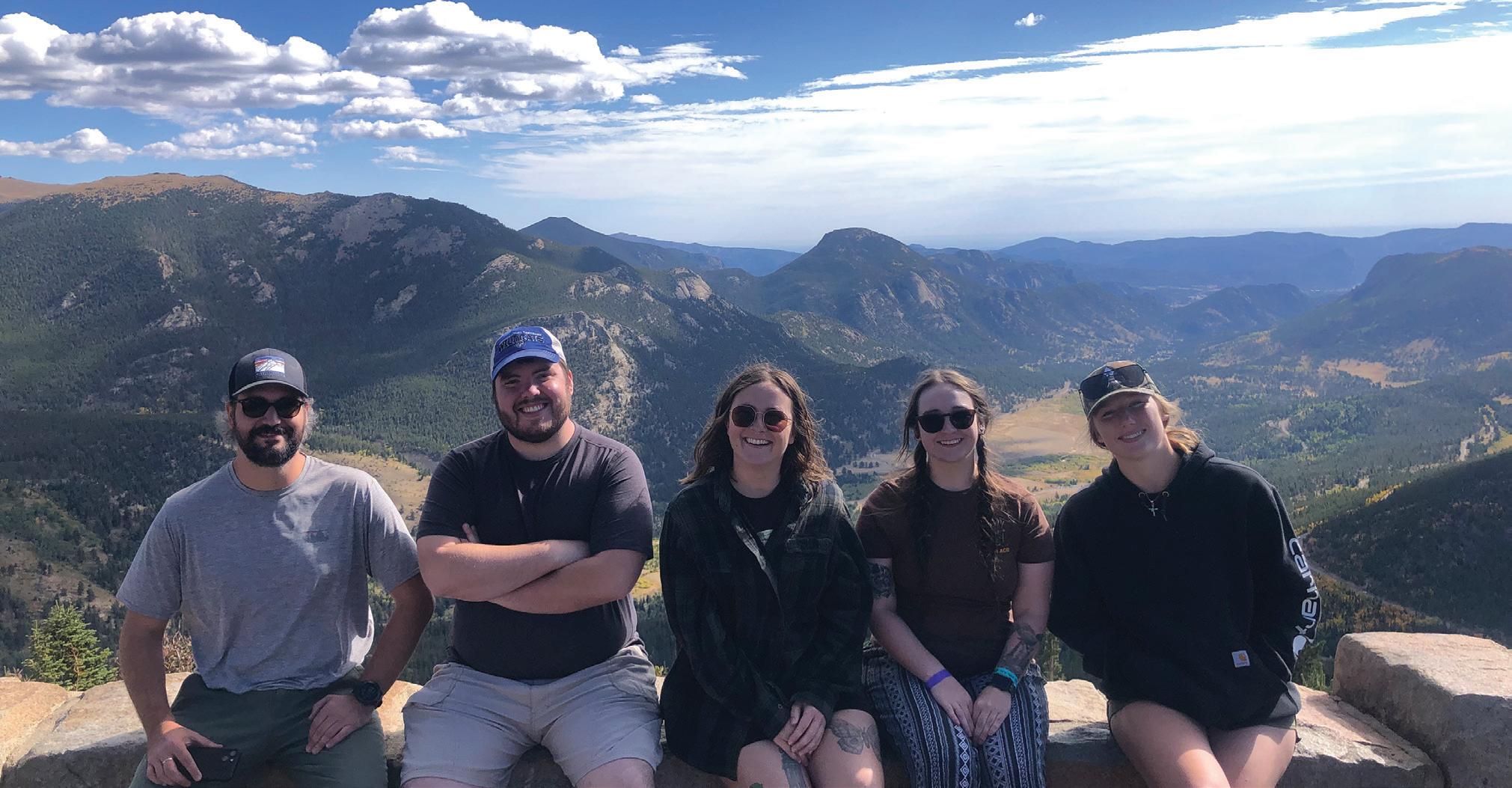

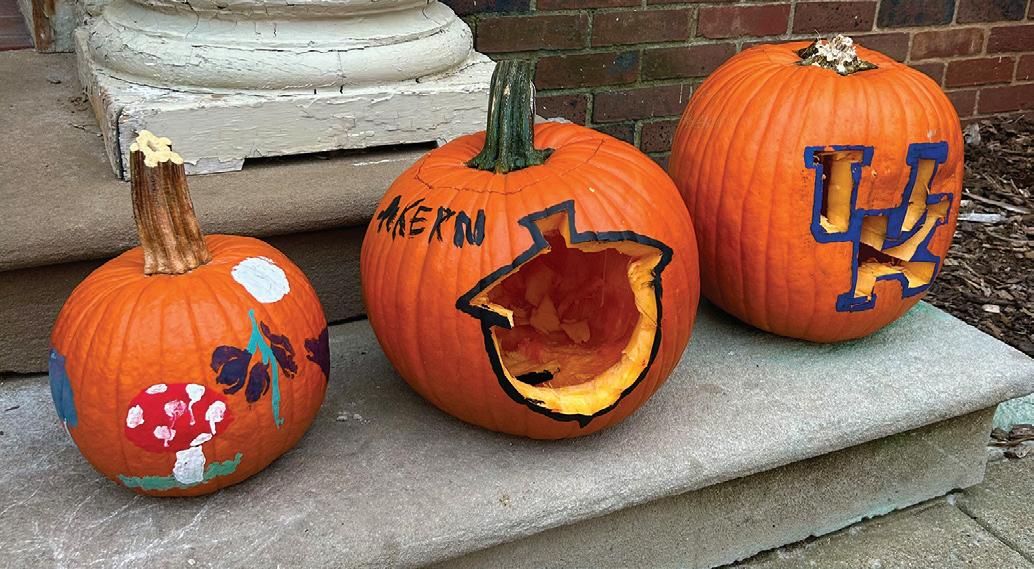



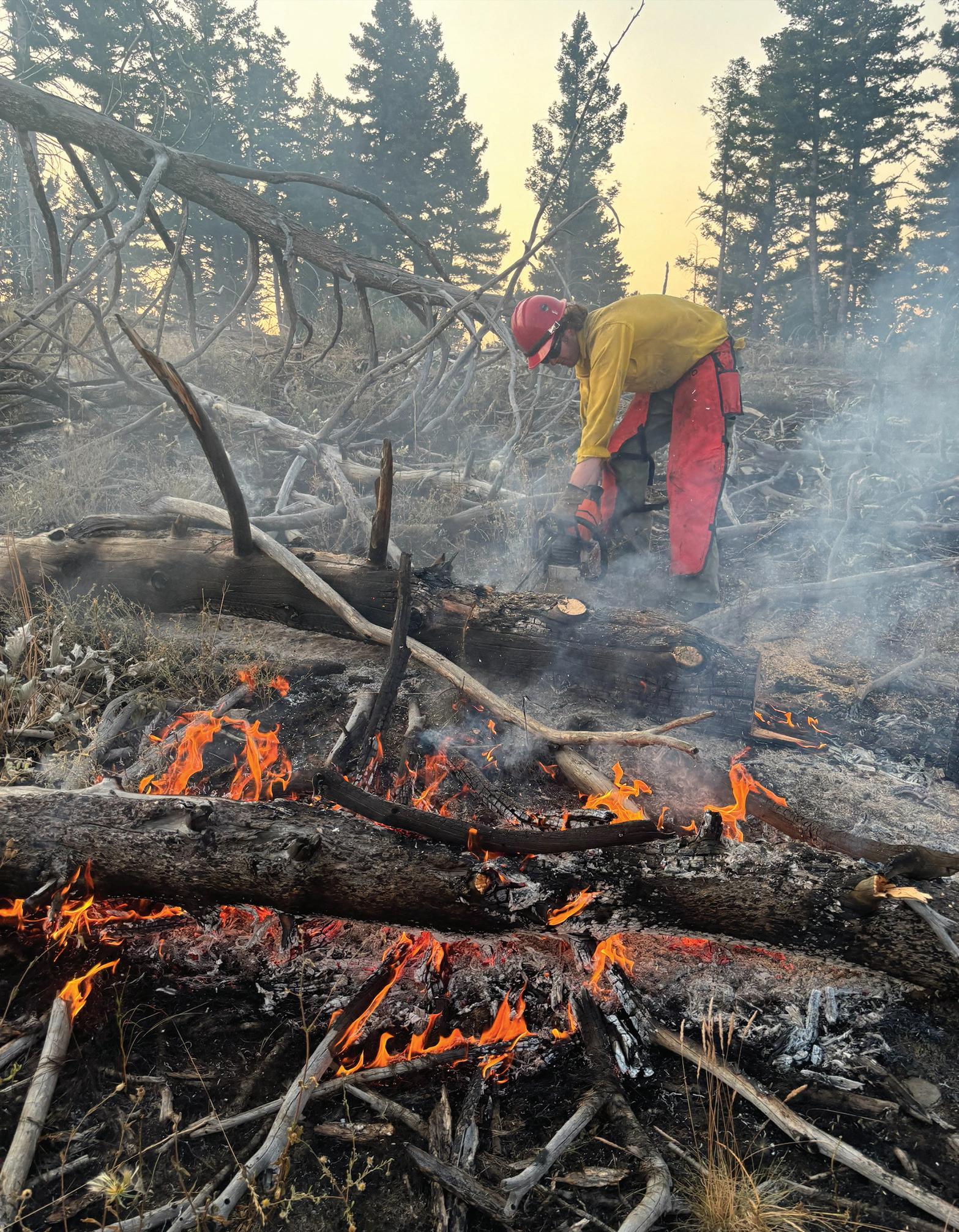



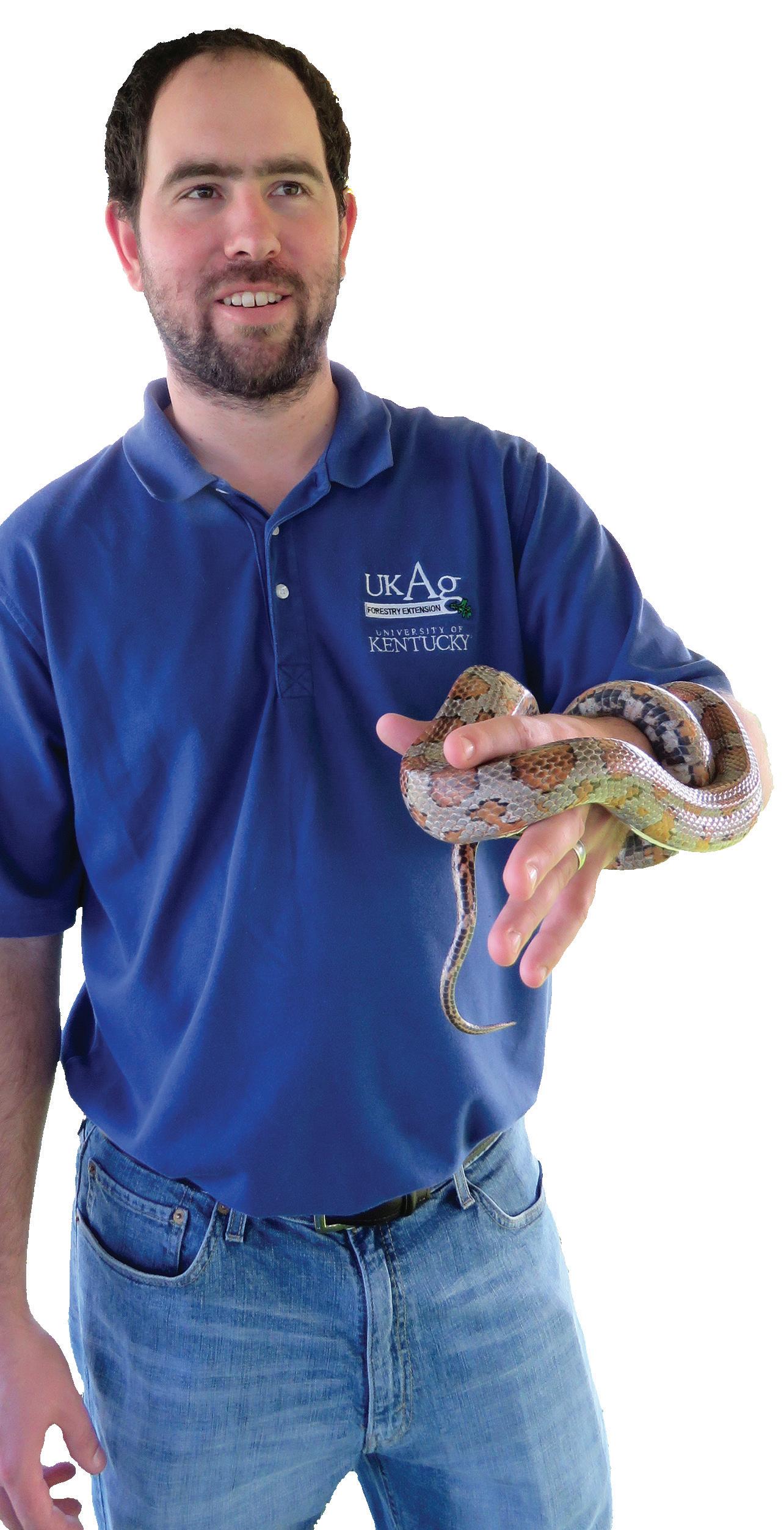

Dr. Matt Springer is an Associate Extension Professor of Wildlife Management who has worked for the Department since February 2016. Most of his professional time is spent in his role as State Wildlife Specialist for the UK Cooperative Extension Service, providing programming and assisting county extension agents. His extension program provides education on various wildlife-related issues, including wildlife damage management, habitat management, hunter recruitment, wildlife diseases, snake identification, and youth programming.
In his extension program, Dr. Springer is informed by county extension agents, partner organizations, and agencies about issues faced by Kentucky residents. He can then conduct applied research that helps solve specific problems in the state and region, ultimately supporting county agents and the public in addressing these issues.
Currently, his research programs focus on the discovery of Chronic Wasting Disease in western Kentucky and on informing the related public and private industries impacted by the issue. His efforts include a collaborative genetics project on deer movement and population susceptibility in western Kentucky, working with Drs. John Cox and Steve Price, along with a recent Ph.D. graduate from our program, Dr. Sarah Tomke, who is leading the work. In addition, they have just obtained funding from the Kentucky Department of Fish and Wildlife Resources to capture and GPS collar about 120 deer in the area to monitor survival, movement, and other information that helps biologists monitor and enact management decisions to hopefully reduce the impact of the disease on the public and wildlife resource.

Almost 50% of Kentucky’s land area is covered by forests. The expansive forests of Kentucky are vital to the state’s economy, environment, and quality of life, providing numerous benefits such as timber production, carbon sequestration, water resources regulation, and outdoor recreation. However, Kentucky’s forests face significant challenges, including invasive species, deforestation, extreme weather, and oak decline. Addressing these challenges requires a landscape approach to examine the interactions between forests and the surrounding environments. UK’s Forest Landscape Ecology Lab, led by Dr. Jian Yang, utilizes geospatial technology to monitor and analyze forest ecosystems at large spatial scales. By leveraging satellite imagery, aerial photography, LiDAR point cloud, and GIS, Dr. Yang’s team tracks changes in forest cover and structure, identifies areas of stress and disturbance, and assesses the impacts of human activities on forested land across Kentucky and beyond.
Dr. Yang’s lab has conducted research that revealed the spatial extent of surface mining and its negative consequences for biodiversity, particularly for the ridgetop biota in eastern Kentucky. Supported by the Kentucky Department of Fish and Wildlife Resources, Dr. Yang has mapped young forest habitats for ruffed grouse in 36 counties of eastern Kentucky with the LiDAR data from the KYFromAbove Program. In collaboration with Professors Liang Liang and Ellen Crocker, Dr. Yang’s lab seeks to quantify the spillover effects of reclaimed mining sites in facilitating the spread of invasive species to adjacent forests and map woody invasive species such as bush honeysuckle under forest canopies. These efforts have led to publications in internationally renowned scientific journals and mapping products of great utility for natural resources management agencies.
With advancements in AI and geospatial analysis platforms, Dr. Yang’s lab is poised to conduct cutting-edge research and train the next generation of environmental scientists and managers. Dr. Yang and his team look forward to developing innovative solutions for the sustainability of forests in Kentucky and worldwide.


Chad Niman and Laurie Thomas have announced the launch of ForestryWorks of Kentucky, a new initiative designed to provide resources for students, educators, and job seekers interested in the forest industry.
The program includes a Forest Worker Certificate Program to equip future workers for one of the South’s largest industries. Employment opportunities within this field are diverse, encompassing roles in logging, forest management, timber procurement, sawmills, plywood mills, pulp and paper mills, and various companies supplying goods and services to the forest


The Soil and Water Quality Extension team is happy to be fully integrated into the Forestry and Natural Resources Department, where we partner with research and teaching missions and, of course, Extension! Our team is comprised of Dr. Amanda Gumbert (team lead), Lee Moser, and Katherine Bullock. We work together to create, curate, and deliver research-based information to a variety of audiences. We provide soil and water programs for the Kentucky Master Naturalist Program, Woodland Owners Short Course, From the Woods Today, and graduate and undergraduate courses. We also support county extension agents and other conservation professionals through technical expertise, consultation, and media resources.

Explore resources, events, and trainings.
sector. To obtain the Forest Worker Credential, all participants must successfully pass the Forest Worker exam.
Additionally, ForestryWorks of Kentucky will offer a two-week summer field course at Robinson Forest for high school students. The program will cover essential topics such as tree measurements, identification, lumber grading, and practical skills like tree felling, log bucking, bandsaw milling, and wood drying. Participants will also benefit from logging site visits and industry tours.
More






Dr. Gumbert’s programs focus on the Kentucky Agriculture Water Quality Act and implementation of conservation practices, but she also has a special interest in stream-side buffer zones in urban and rural areas. She has experience with programs that address water quality, solid waste, air quality, and soil concerns for youth and adult audiences. In addition to her Extension appointment, Dr. Gumbert teaches an introductory course on issues in agriculture, food systems, and the environment. The overall goal of her work is to improve water quality in Kentucky by providing education and technical information to those whose decisions impact our natural resources.
Lee has previous professional experience working with the US Forest Service and private environmental consulting. His current work focuses on engaging and collaborating with urban and rural property owners to develop water quality and quantity-related best management practice demonstrations that allow others to learn from the projects. Additional interests include developing watershed leaders, collaborating on watershed planning and management projects, researching and developing climate change-related Extension resources, and engaging citizens through environmental education across demographics with an emphasis on climate change and environmental justice.
Katherine and the team work to translate university research on water/soil quality, agriculture, and climate change into relevant, user-friendly programs and products to inform Kentuckians and promote environmental stewardship and health. She is an innovative, mission-centered education director and exhibit designer with over 20 years of experience in cross-curricular environmental education. Katherine works to promote strong community partnerships, robust professional development programs, and engaging programming that connects learners to the natural world.
Dr. Chris Barton on KET’s Kentucky Life: Planting Appalachia’s Future
Green Forests Work is converting reclaimed, non-native grasslands and shrublands into productive forestland while providing jobs and restoring ecosystems.

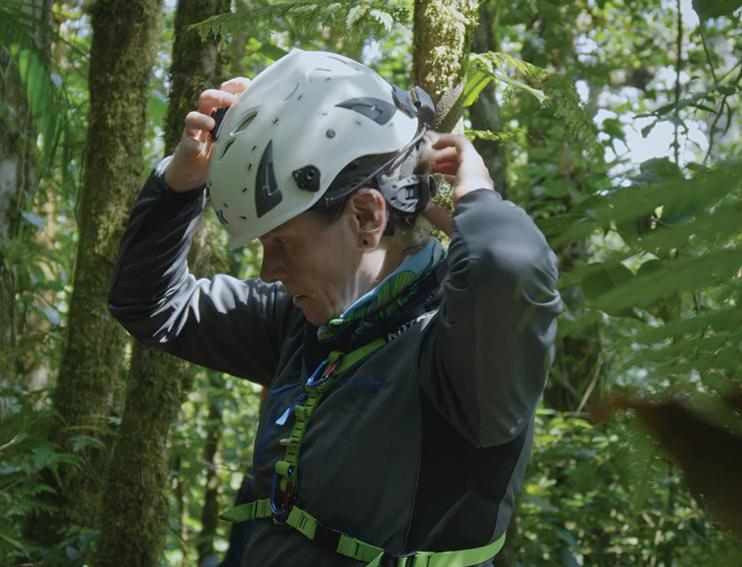

Dr. Sybil Gotsch featured in the Proceedings of the National Academy of Sciences


Dr. Steven Price receives funding from the National Institute of Health
Along with collaborators from Virginia Tech, Yale, and US Geological Survey, researchers will investigate the consequences of snake fungal disease on snake populations and the role of environmental reservoirs in disease dynamics.

Learn more about the Price Lab


Dr. Thomas Ochuodho on CTV National News: U.S.-Canada Softwood lumber trade troubles
A Computable General Equilibrium Analysis of the United States-Canada 2006 Softwood Lumber Agreement

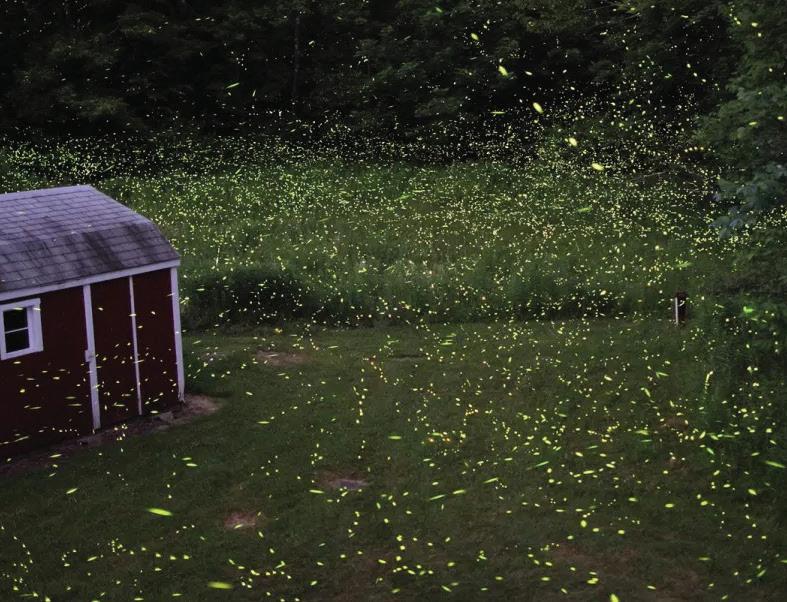
Michael Ammerman announces the launch of The Kentucky Logging Bridge Program
Starting January 1, 2025, the program will be providing bridge mats to loggers and sawmills in the state of Kentucky to reduce suspended sediment in streams. The program is funded by the U.S. Forest Service.

Dr. DJ McNeil in Yale Climate Connections: Fireflies face ‘one-two punch’ of climate change
Ecologist warns of dwindling numbers as winters warm and droughts increase.





